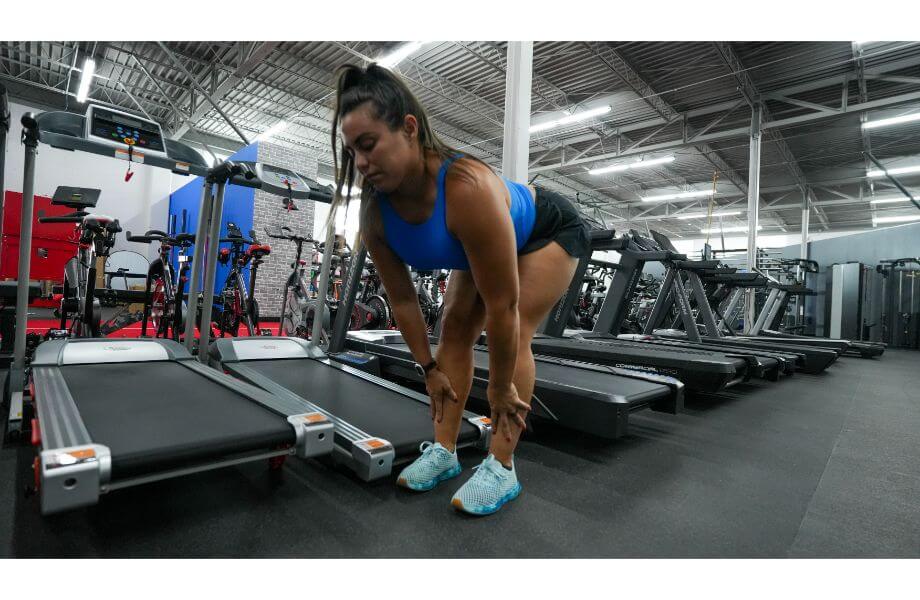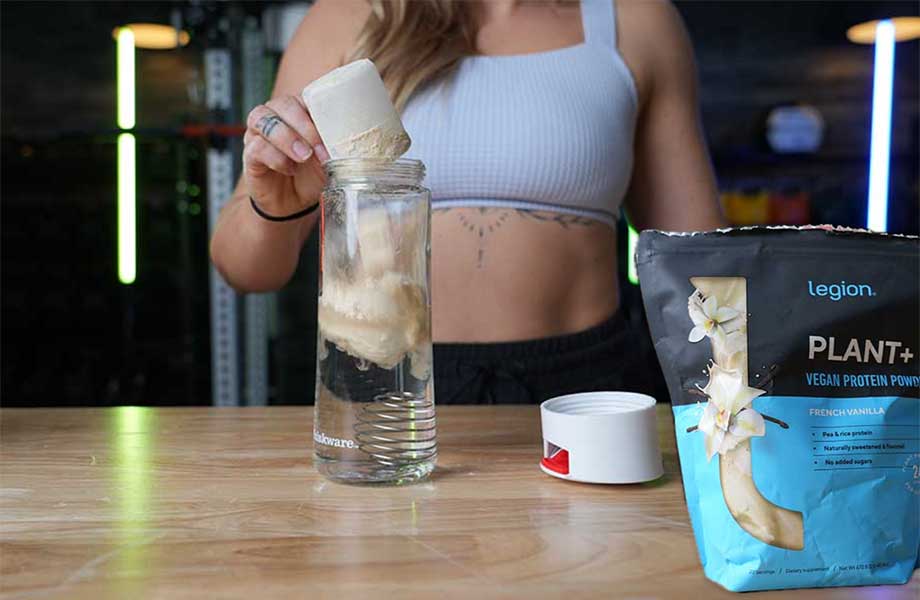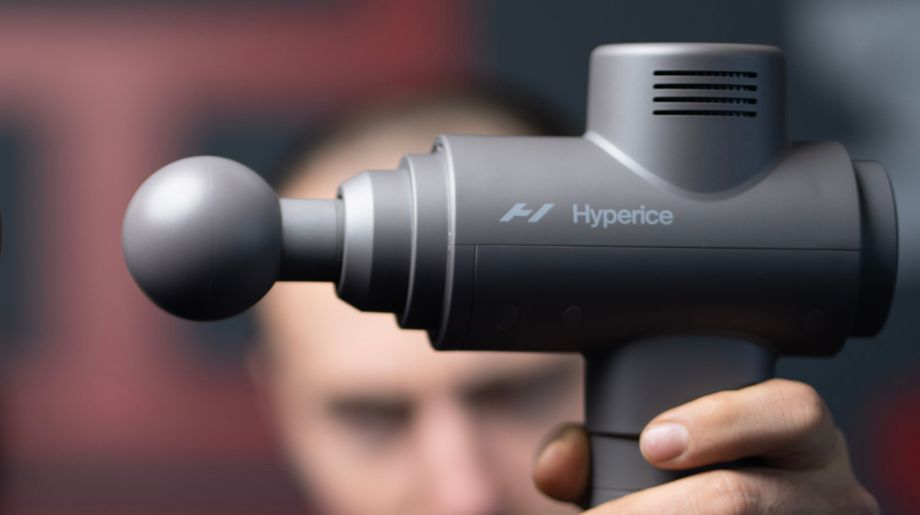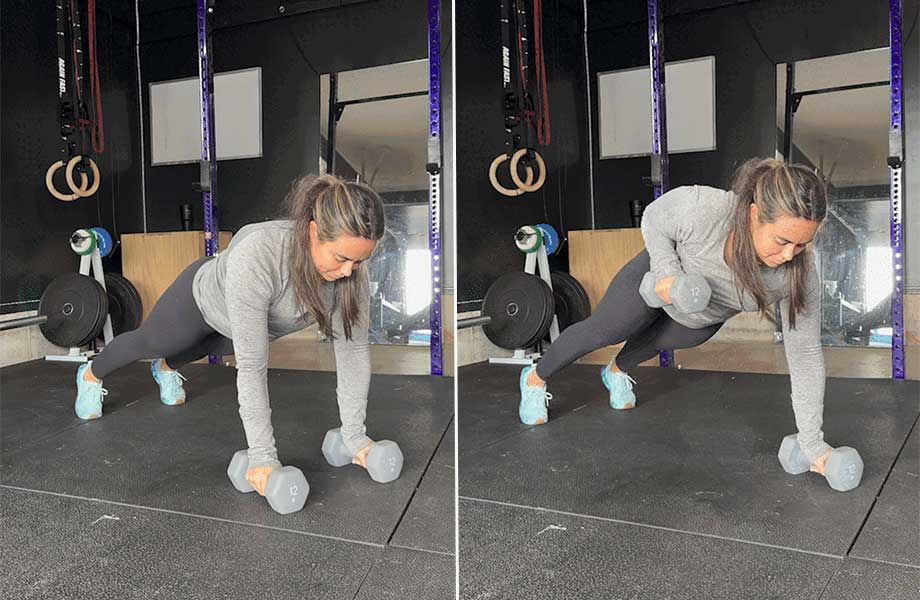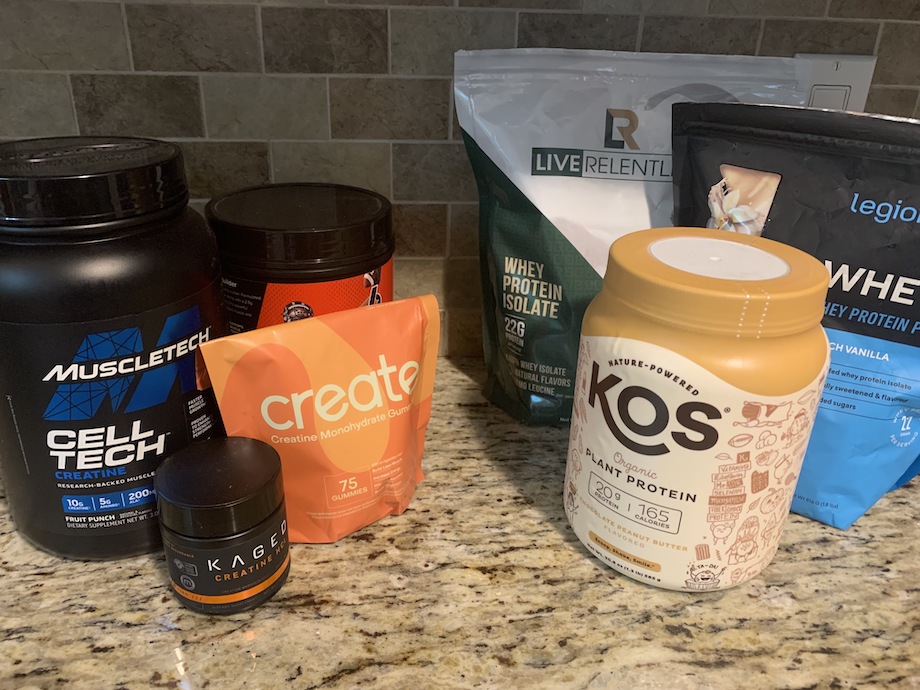Cardio workouts strengthen your heart, circulatory system, and lungs. This type of exercise is important for your long-term health, although it’s not entirely complete without a couple of days of strength training, too.
Bad knees, whether because of knee injury, osteoarthritis, or another condition that causes joint pain, can sometimes put a hamper on your cardio. The best cardio for bad knees gets your heart rate up and doesn’t aggravate your knee pain. However, what that activity is will vary from person to person.
Thankfully, there are more (and better) ways than running to get a cardio workout. You can do a low-impact workout that activates your whole body or strengthens your lower body, including the glutes, hamstrings, and calves but also protects your knees from undue stress.
Before we jump into a few of your options, here are some tips to consider:
- Warm up before increasing your workout intensity.
- Acknowledge your fitness level so you don’t increase your intensity or load too fast. Gradually increase reps or the time you work out to give your body time to adapt.
- If you still have trouble finding a good cardio exercise with your current knee problems, contact a physical therapist or an experienced personal trainer.
Walking
Walking is where most people turn once they eliminate running from their to-do list. It’s easily accessible, inexpensive and almost anyone can do it. All you really need is a comfortable pair of shoes and a place to walk. In poor weather, the mall or a gym with an indoor track can do. We’re big proponents of walking (and movement in general). However, it’s important to point out that walking isn’t the most low-impact cardio workout on our list.
Study after study finds that walking puts less stress on the knees than running. A 2023 overview1 published in the European Journal of Rheumatology included reviews of studies and meta-analyses and found that walking did not increase knee pain for individuals with osteoarthritis, even when done at a brisk pace. (Brisk was defined as 3 MPH, or a 20-minute mile.)
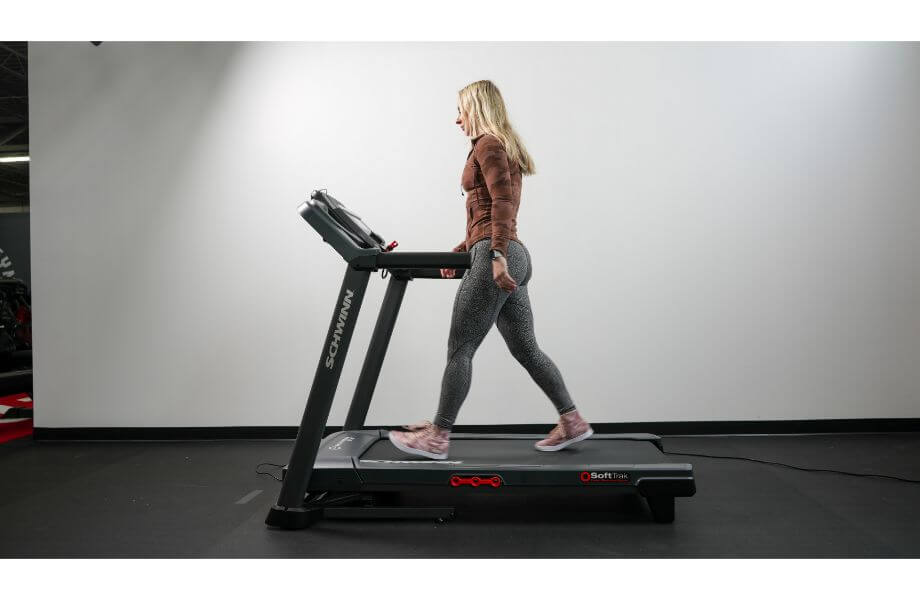
A small 2016 study2 published in The Journal of Strength and Conditioning Research compared the loading forces of walking and running at similar intensities. Results showed that, though the activities were performed at the same intensity, running put substantially more loading forces on the lower body. Researchers suggested that walking at an incline could potentially bring similar aerobic benefits without the heavy load on the lower body.
How long and far should you walk? The Centers for Disease Control and Prevention (CDC)3 recommends adults do 150 minutes of moderate-intensity activity per week, along with two days of strength training. You can divide that time any way you want, but we suggest spreading out your walking time throughout the week rather than doing it all on one or two days. Please note that the CDC’s recommendation is for maintaining your weight. If you’re focusing on weight loss, you may need to walk longer or at a higher intensity.
If you want to increase the intensity and burn calories, try adding trekking poles to your walk. A 2020 review4 in Wilderness & Environmental Medicine found that trekking poles can reduce lower-extremity load and increase the cardio benefits by engaging the full body.
Swimming
Swimming takes a significant amount of stress off of the knees and the rest of the joints if you have multiple joint problems. It can be a bit harder to find somewhere to swim than walk, but many professional gyms include a pool as part of their services.
A 2018 study5 conducted among 48 overweight men compared the cardio-respiratory endurance, strength, and body mass index (BMI) after consistent walking, cycling or swimming as compared to a control group who had no prescribed activity plan. Results showed that those who followed the swimming protocol had better improvement in their BMI, cardiovascular health, and muscular strength than those who walked, cycled, or who were in the control group.
Another study published in 20236 in the International Journal of Environmental Research and Public Health compared the cardiorespiratory health of two groups of prepubescent boys. One group regularly swam while the control group did not. Over the course of three years, the swimmers developed better, stronger cardiovascular health.
You can swim laps in a pool, but you don’t have to be a swimmer to swim . . . oddly enough. You can also walk, run, or use water weights in the pool. Water increases the resistance, so you’ll get your heart rate up by consistently moving against the water. However, traditional strokes like crawl or butterfly activate the upper body to increase your heart rate even more.
Cycling
Cycling, whether on a road bike or stationary bike, is an excellent way to get your heart rate up while protecting your knees. A 2013 review7 published in the Journal of Engineering in Medicine compared several popular cardiovascular exercises, including cycling, and the load they put on the knees. Stationary bicycling was one of the least stressful activities for the knees.
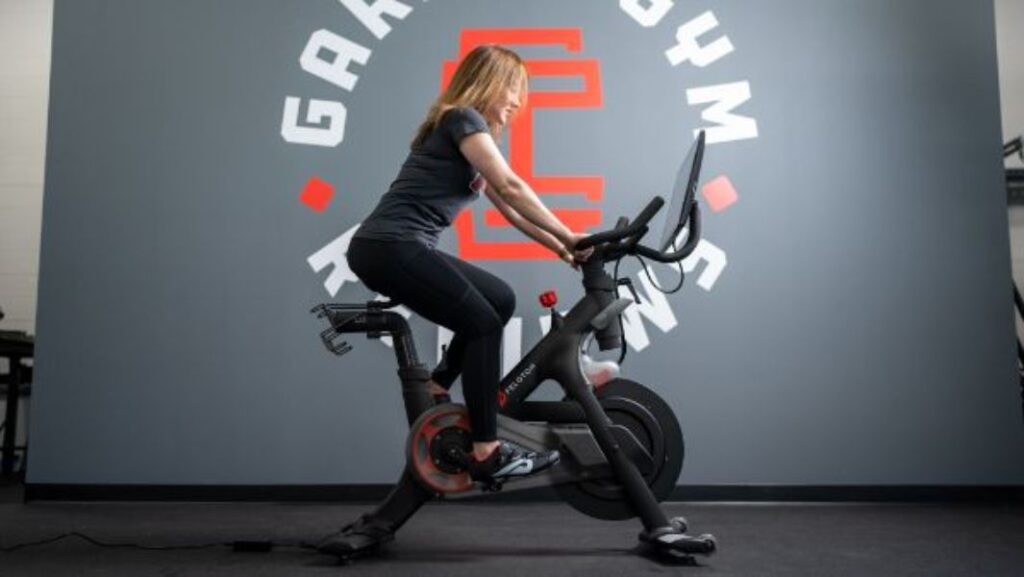
Most stationary bikes come with different programs to change up your workouts so you don’t get bored. If you have a bad back, a recumbent bike can save your knees and back. Cycling doesn’t engage the upper body, but if you’re using a stationary bike, you can use dumbbells at the same time to get more muscle groups working at once, increasing your heart rate. Make sure to vary your speed and effort to keep yourself engaged but also to increase your calorie burn.
RELATED: Best Recumbent Bike
Elliptical
That same 2013 review found that using the elliptical trainer puts similar forces on the knees as walking on a treadmill. However, you can often bump up the cardiovascular benefits with an elliptical because it engages the upper and lower body to work your whole body.
A 2021 study8 published in the Journal of Sports Science & Medicine found that the elliptical, treadmill, and rowing machine caused the same level of muscle activation, though not necessarily the same muscle groups. The elliptical machine is also a favorite of many a physical therapist when rehabbing injuries. Why? Because it’s gentle on your body, works the upper and lower body, and builds strength in the quads, glutes, hamstrings, and calves.
Ellipticals let you increase the resistance (and sometimes incline) to vary the cardio intensity. Preprogrammed workouts may include high-intensity interval training (HIIT) workouts, hills, or various intervals to keep you from getting bored. Of course, you can always go freestyle and manually adjust the resistance and incline.
Rowing
Rowing is tough, but as it turns out, it’s not as hard on your knees as running, tennis, and other high-impact sports. In fact, in the 2013 comparative review mentioned previously, rowing put the least amount of stress on the knees of any of the tested activities. Rowing is a great option because it engages your entire body—the back, shoulders, arms, core, quadriceps, glutes, and calves. (Keep in mind that rowing puts added strain on the low back.)
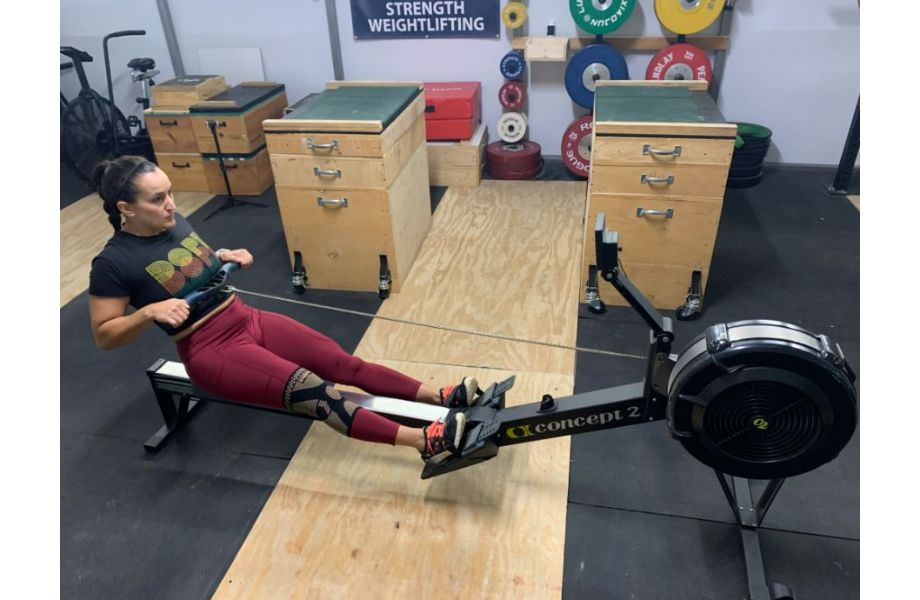
You can do intervals and HIIT on a rowing machine just like you can while doing other forms of cardio exercise. You can do steady-state training where you hit a certain heart rate or exertion level and stay with it for the entirety of the workout or you can increase and decrease the intensity. As your cardiovascular health improves, you can increase the time you spend at higher intensities and further challenge yourself.
Best Cardio for Bad Knees: Final Thoughts
Your knees might be bad from years of injuries, or you might suffer from knee problems that run in your family. Either way, cardio is an important part of taking care of your body, but your knees don’t need to suffer for your cardiovascular health. Skip the deep squats and opt for any of the cardio exercises we’ve listed. Even these aren’t your only options. Yoga, pilates, and other floor exercises are low-impact and gentle on the knees.
Here are a few tips to keep in mind when you’ve got bad knees and you’re ramping up for some cardio:
- You need at least 150 minutes of moderate-intensity exercise and two days of strength training each week.
- Vary your workouts to keep your mind and body engaged. If you hate rowing, skip it and move on to the elliptical or another machine.
- Listen to your body. (If it hurts, don’t do it.)
- Rowing and cycling are two of the lowest-impact exercises for the knees.
- A recumbent bike is a good option if you have both back and knee problems.
Best Cardio for Bad Knees FAQs
What cardio machine is easiest on the knees?
The rowing machine, according to the previously mentioned 2013 review in the Journal of Engineering in Medicine, is the easiest machine on the knees followed by the stationary bike, treadmill (walking), and elliptical.
How can I stay in shape with bad knees?
A stationary bike, rowing machine, elliptical and even a treadmill can provide low-impact exercise that’s good for your body but easy on the knees. Swimming is virtually no impact, though access to a pool might be a problem. Consider a gym membership where you can swim laps or access a water aerobics class.
RELATED: Best Treadmill For Bad Knees
What exercises should I avoid with bad knees?
Running, tennis, basketball and other high-impact sports that also require quick multi-dimensional movements put a heavy load on your knees. Opt for cycling, walking, rowing, or swimming instead.
What is the best cardio exercise for arthritic knees?
First, everybody is different, and the history behind your arthritis may influence what activities are best for you. Treatment guidelines published in a 2020 volume of Arthritis & Rheumatology recommend exercise but not a specific exercise because the current evidence doesn’t recommend one over the other.9 However, exercise, in general, keeps the muscles surrounding the knee strong and maintains range of motion, which can reduce arthritic pain.
Cycling, swimming, and walking are common suggestions. However, talk to your doctor, and try a few different activities. If one causes pain, try something different. You may always have some level of pain, but one activity may work better for you than another.
Which is better for the knees: A treadmill or a bike?
Riding a bike puts a smaller load on your knees, according to the previously mentioned 2013 review. However, if you like walking on a treadmill better and it doesn’t hurt your knees any more or less, walk on a treadmill. Do what works for you, and listen to your body.
References
- Vonier D and White D. Walking, running, and recreational sports for knee osteoarthritis: An overview of the evidence. European Journal of Rheumatology. 2022; doi: 10.5152/eurjrheum.2022.21046 [Epub ahead of print].
- Swain DP, et al. Impact forces of walking and running at the same intensity. The Journal of Strength and Conditioning Research. 2016; 30(4): 1042-1049. doi: 10.1519/JSC.0000000000001185.
- Physical Activity Guidelines. Centers for Disease Control and Prevention. 2023. https://www.cdc.gov/physicalactivity/index.html
- Hawke AL and Jenson RL. Are trekking poles helping or hindering your hiking experience? A review. Wilderness & Environmental Medicine. 2020; 31(4): 482-488. doi: 10.1016/j.wem.2020.06.009
- Rajarajan S and Anandhan P. Influence of walking cycling and swimming on physical fitness among overweight men. International Journal of Physiology, Nutrition and Physical Education. 2018; 3(2): 728-731.
- Zarzeczny R, et al. The effect of three-year swim training on cardio-respiratory fitness and selected somatic features of prepubertal boys. International Journal of Environmental Research and Public Health. 2022; 19(2): 7125. doi: 10.3390/ijerph19127125
- Fregly, B. J., Patil, S., & Steklov, N. Knee joint forces: prediction, measurement, and significance. Proceedings of the Institution of Mechanical Engineers. Part H, Journal of Engineering in Medicine. 2013; 226(2): 95. doi: 10.1177/0954411911433372
- Filipovic M, et al. Maximal fat oxidation: Comparison between treadmill, elliptical and rowing exercises. Journal of Sports Science & Medicine. 2021; 20(1): 170-178. doi: 10.52082/jssm.2021.170
- Kolansinski S, et al. 2019 American college of rheumatology/arthritis foundation guideline for the management of osteoarthritis of the hand, hip, and knee.Arthritis & Rheumatology. 2020; 72(2): 220-223. doi: 10.1002/art.41142


